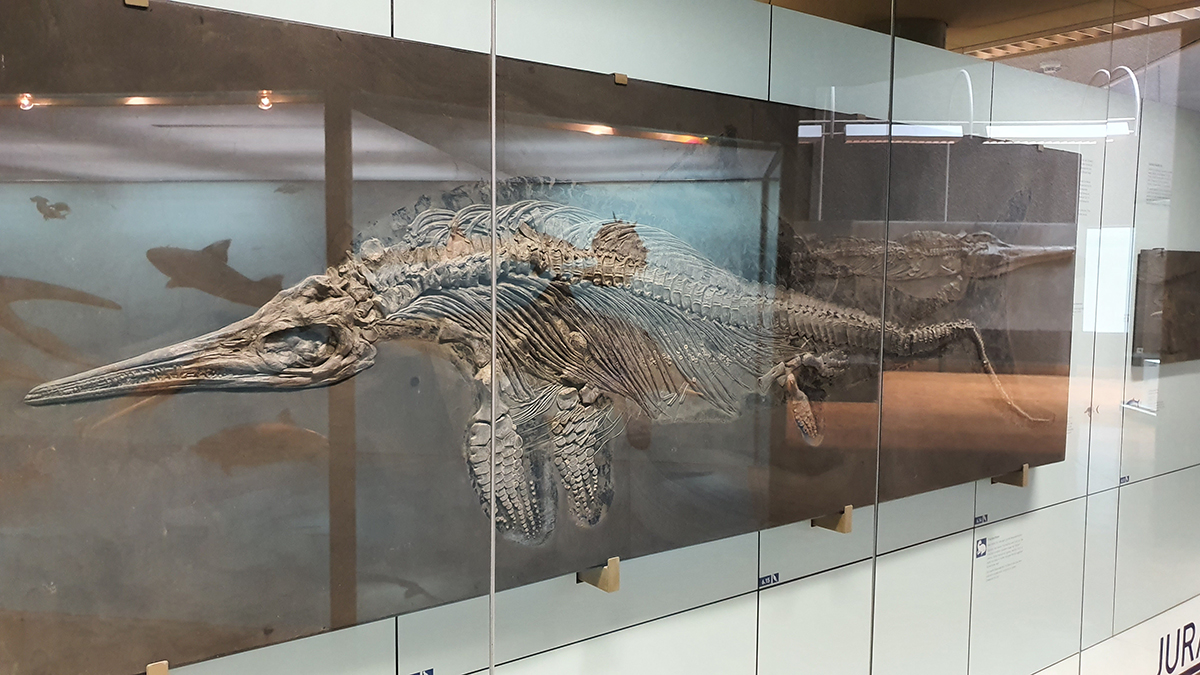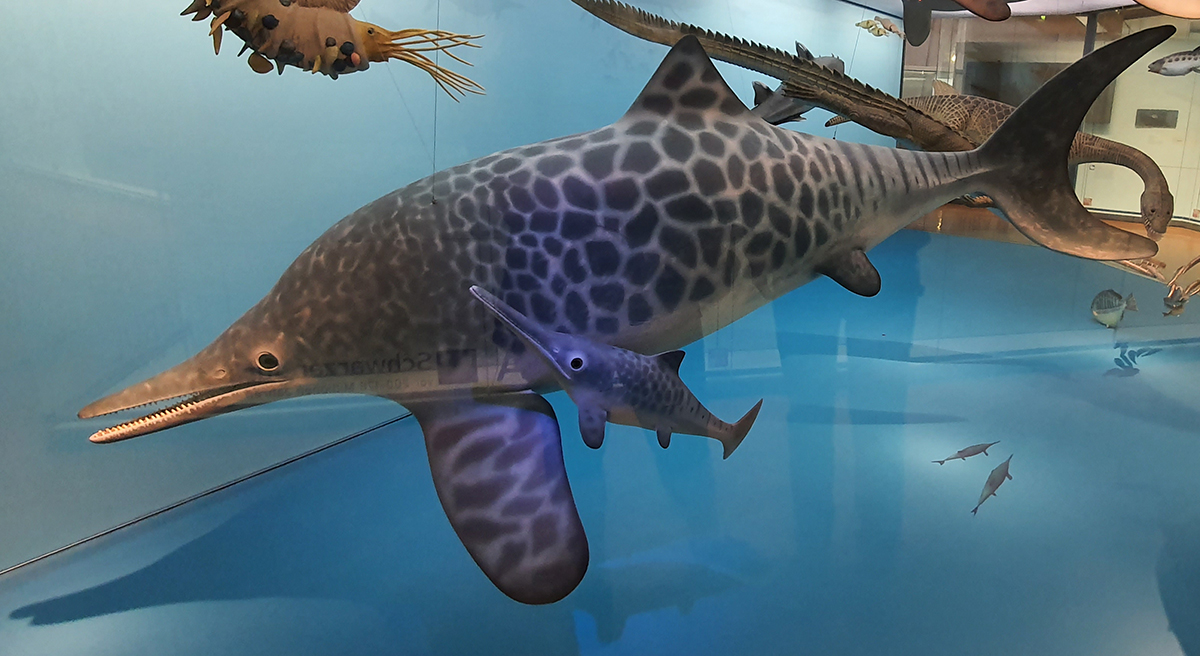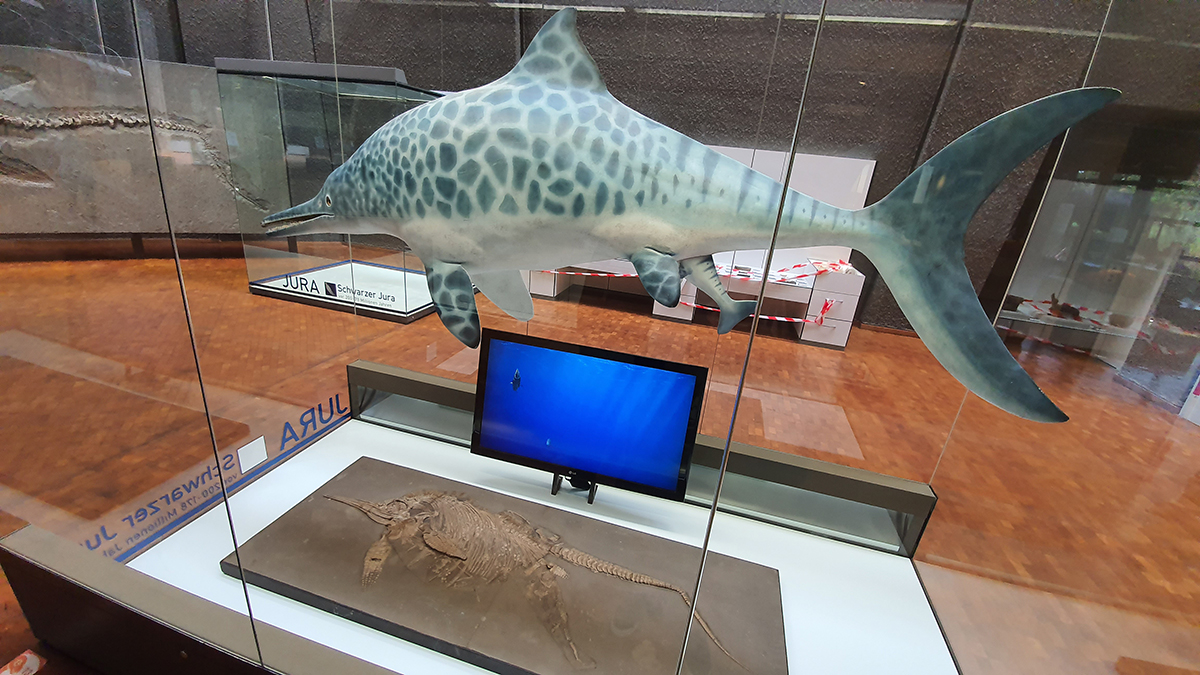
At the beginning of the XNUMXth century, Mary Anning found the first complete fossil in England: that of the Ichthyosaurus. Despite its resemblance to current dolphins, it was not a mammal, but an extinct aquatic reptile. which inhabited European waters off Belgium, Switzerland and England. Its natural habitat is supposed to be the open sea. It existed at the end of the Triassic and became extinct at the beginning of the Jurassic, between 200 and 185 million years ago.
The name of this aquatic dinosaur, "Ichthyosaurus", comes from the Greek. The word "ichtyhis" means "fish", and the word "saurus" means "lizard", so its name could be translated as "lizard fish".
Description of the Ichthyosaurus

the ichthyosaurus It could measure about two meters long and about 50 centimeters high, thus being one of the smallest dinosaurs among its relatives. It is speculated that its weight was around 90 kilos, similar to a modern American bear. In an area of Germany called Holzmaden, Jurassic rocks were found with many, if not hundreds of fossils of this species. These fossil skeletons were very well preserved, some bones were even articulated. In addition, fossils were found with hatchling specimens inside. Thanks to these findings, it was possible to deduce very well physical aspects and behavioral traits that the Ichthyosaurus had. These characteristics are not exclusive to this dinosaur, but have also occurred in other ichthyosaur species such as the related genus Stenopterygius.
[related url=»https://infoanimales.net/dinosaurs/extincion-de-los-dinosaurs/»]
This aquatic lizard had a very fleshy fin on its back and a very large caudal fin. In addition, it had two front fins and two rear fins, probably to keep its course and balance in the open sea. These physical traits are known for certain today thanks to German fossils that even show the outline of the skin. Besides, it is speculated that he could reach a speed of 45km/h in the water, moving the tail from side to side.
Since the ear bones of the Ichthyosaurus were quite solid, it is assumed that it transferred the vibrations of the water to the inner ear. Since this feature turned out to be quite useless for this animal, it ended up disappearing in later ichthyosaurs. However, it is speculated that the sense that helped him the most when eating was sight, since it had very large and sensitive eyes that were protected by bony plates. The nostrils were very close to the eyes, which could have made it easier for it to catch air on the surface.
Diet

After the discovery of fossilized feces, also called coprolites, it was deduced with great certainty that this dinosaur ate mainly fish and squid. The Ichthyosaurus had a very long snout with which it caught its victims and seized them with its sharp teeth. Despite being a fearsome predator for many fish, he himself could also become prey for sharks and other larger ichthyosaurs, such as the Temnodontosaurus, in which remains of Ichthyosaurus hatchlings have been found between its large ribs.
Gestation of the Ichthyosaurus

Initially it was thought that, like other aquatic reptiles, the Ichtyhosaurus laid its eggs on land. As we have already mentioned, fossil skeletons of this aquatic lizard were found that contained specimens of hatchlings already formed in their wombs. Therefore, these dinosaurs had a very good level of adaptation and could be considered pelagic organisms, which means that they did not return to land. Due to this discovery it is known that the ichthyosaurus was viviparous. What does this mean? Viviparous animals are those whose embryo develops in the womb of the female. There, after fertilization, it receives the oxygen and food it needs to grow and develop its organs until birth. This phenomenon occurs in almost all mammals, including humans. Ichthyosaurus hatchlings stuck out their tails first to avoid drowning during birth.
However, the birth of a baby always carries risks. In the lower image we see the fossil skeleton that is exposed in the museum of natural sciences in Stuttgart, in Germany. This female died just before or during labor. After her death, one of her young was expelled by putrefactive gases, and three smaller skeletons are still fossilized in the mother's womb.

Other theories hold that the Ichthyosaurus was ovoviviparous. This means that the female generated the eggs inside her uterus, and these opened inside her, a process similar to that of current sharks. It is assumed that the pregnant Ichthyosaurus sought shallow places for delivery. Thus, the newborn pups could quickly reach the surface to catch air. To date it has been calculated that she could give birth to up to eleven pups.